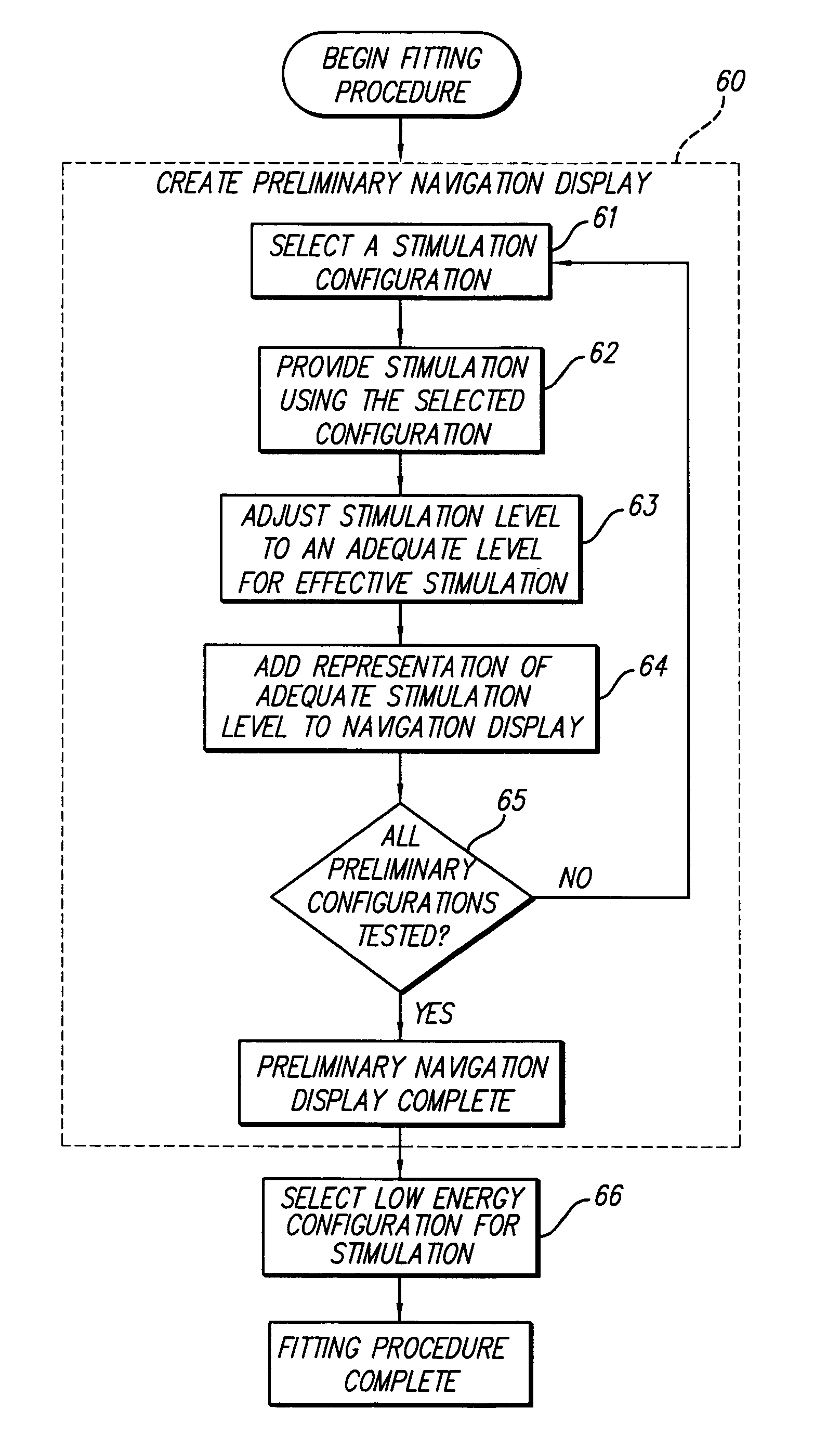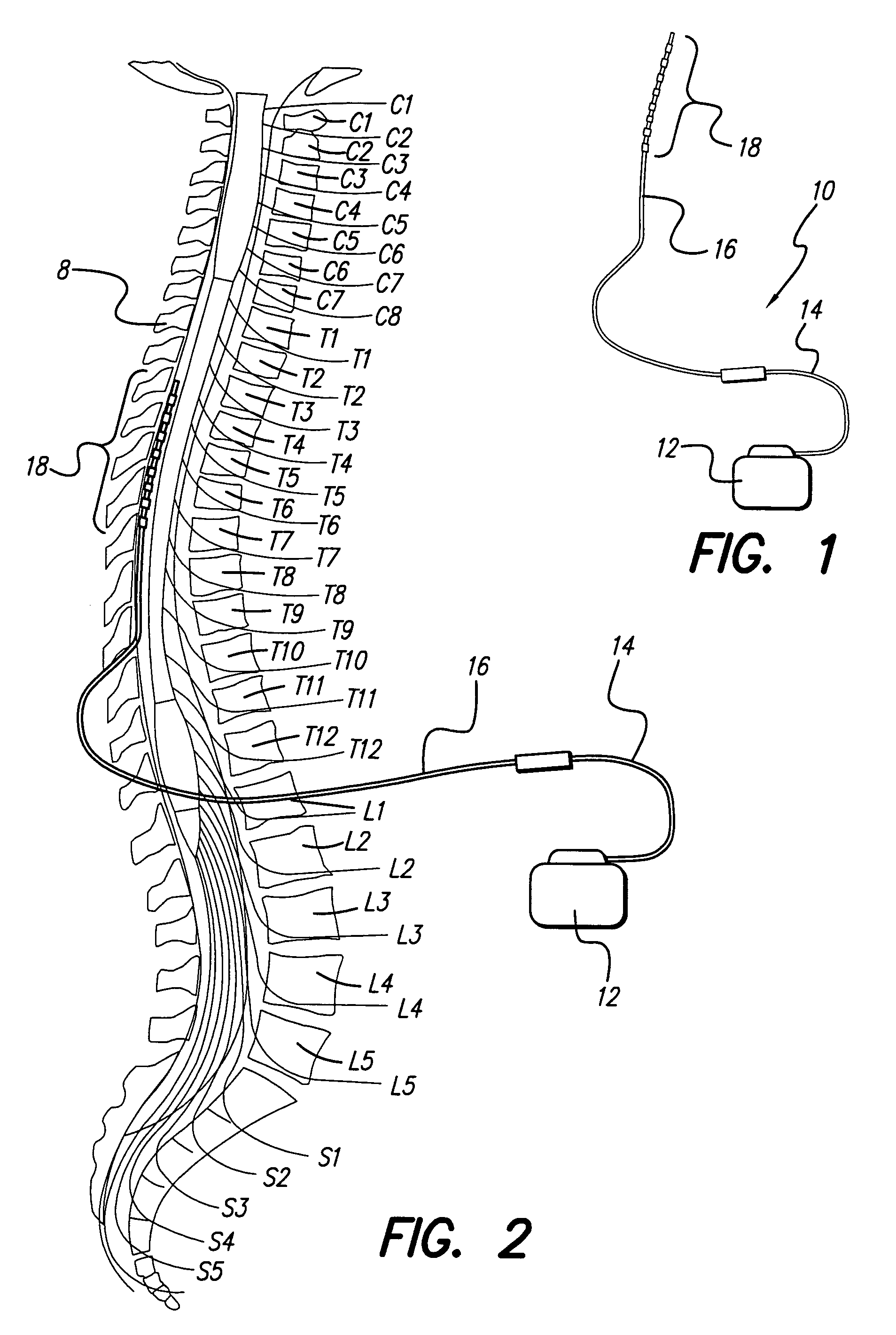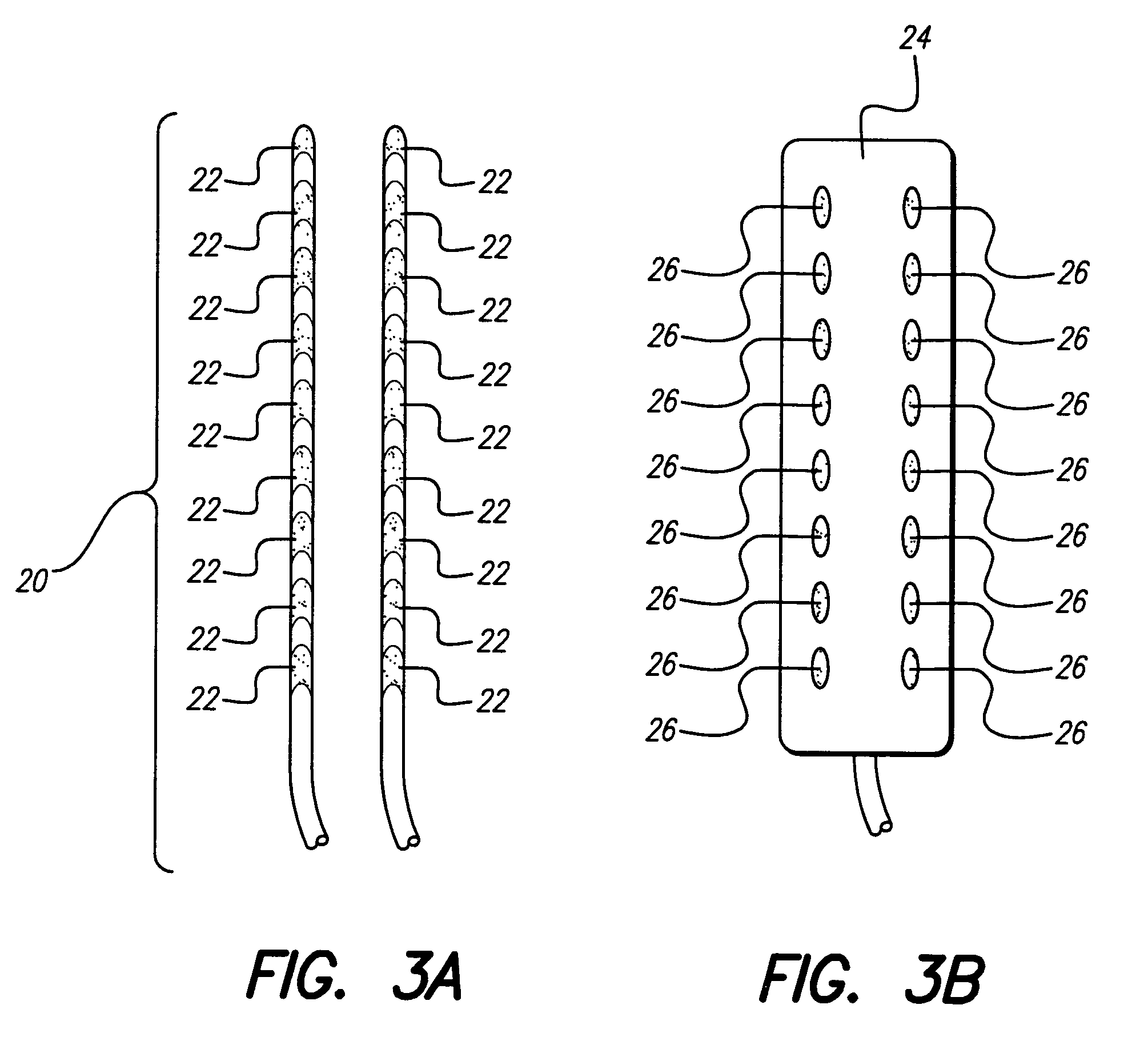Power qualifier for electrical stimulation configurations
- Summary
- Abstract
- Description
- Claims
- Application Information
AI Technical Summary
Benefits of technology
Problems solved by technology
Method used
Image
Examples
Embodiment Construction
[0028]The following description is of the best mode presently contemplated for carrying out the invention. This description is not to be taken in a limiting sense, but is made merely for the purpose of describing the general principles of the invention. The scope of the invention should be determined with reference to the claims.
[0029]The power qualifier of the present invention provides an improved display and cues for a clinician who is fitting a Spinal Cord Stimulation (SCS) system to a patient. Such display and cues may be used during the fitting of an SCS system 10 as shown in FIG. 1. The SCS system 10 typically comprises an Implantable Pulse Generator (IPG), or stimulator, 12; optionally, at least one lead extension 14; and at least one lead 16 that includes at least one electrode array 18. The IPG 12 generates stimulation current or voltage for the implanted electrodes that make up the electrode array 18. A proximal end of the lead extension 14 is removably connected to the I...
PUM
 Login to View More
Login to View More Abstract
Description
Claims
Application Information
 Login to View More
Login to View More - R&D
- Intellectual Property
- Life Sciences
- Materials
- Tech Scout
- Unparalleled Data Quality
- Higher Quality Content
- 60% Fewer Hallucinations
Browse by: Latest US Patents, China's latest patents, Technical Efficacy Thesaurus, Application Domain, Technology Topic, Popular Technical Reports.
© 2025 PatSnap. All rights reserved.Legal|Privacy policy|Modern Slavery Act Transparency Statement|Sitemap|About US| Contact US: help@patsnap.com



